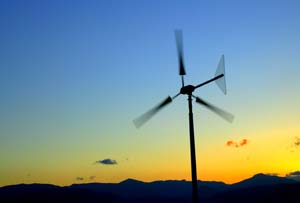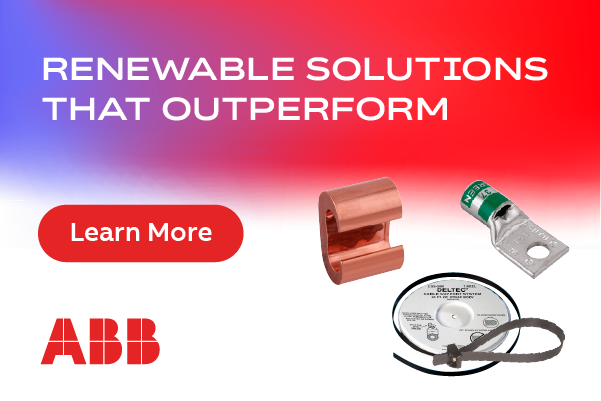The Trends and Benefits of Standards & Compliance: In the small wind industry
 The small wind power industry has enjoyed substantial growth in the past few years, according to the American Wind Energy Association (AWEA), and is poised for continued expansion as the demand builds for clean, alternative energy. As a result, standards compliance and certification are playing increasingly important roles for all parties—from small wind turbine manufacturers to their suppliers, distributors, re-sellers, and installers, and from local and state governments to the end consumers.
The small wind power industry has enjoyed substantial growth in the past few years, according to the American Wind Energy Association (AWEA), and is poised for continued expansion as the demand builds for clean, alternative energy. As a result, standards compliance and certification are playing increasingly important roles for all parties—from small wind turbine manufacturers to their suppliers, distributors, re-sellers, and installers, and from local and state governments to the end consumers.
Recently, standards and codes for safety, performance, and durability have been developed that help all parties ensure small wind turbines are installed and operate safely, while delivering the performance and equipment longevity that’s consistent with manufacturer claims. In an increasing number of jurisdictions, compliance with some or all of these standards is becoming a requirement for installation, connection to the electric utility, as well as qualifications for government approvals and incentives.
In fact, some states like New York and California, as well as groups like the Interstate Turbine Advisory Council (ITAC), are establishing deadlines for small wind turbines to be certified. It’s important manufacturers understand the reasons for and benefits of these standards to increase their chances for successful compliance, to ensure their products qualify for valuable government incentives, and to compete in this fast-paced marketplace.
Awareness
If a manufacturer is unaware of the various requirements necessary for small wind turbine certification, it can be costly. Without the proper documentation of compliance for government agencies and inspectors, manufacturers can miss incentive opportunities, lose a bid, experience delays and added costs on installations, or even have to return to the drawing board. This leaves a window of opportunity for compliant competitors to fill the void.
When completed as part of a robust product design cycle, however, compliance isn’t burdensome. Manufacturers simply need to be aware up front of what’s required and how to proceed. Minimally, a preliminary design review by an accredited testing and certification body can provide the information necessary before complications arise.
Standards
The current industry requirements for small wind turbines come from three primary sources:
1. Standards covering mechanical/structural design, performance, and durability;
2. Standards for electrical safety; and
3. Electrical and building codes.
The first group of standards includes: AWEA’s 9.1, standard which is used in North America (the US and Canada); The British Wind Energy Association (BWEA) standard, which is required in the United Kingdom; and the International Electrotechnical Commission IEC 61400-2, which is the basis for AWEA and BWEA’s standards, but is used as a standalone in some jurisdictions, including European countries.
The second source of requirements is the electrical safety standards. These documents specify how a turbine should be constructed to meet basic electrical safety requirements, and to prevent the occurrence of shock hazards, fire, stored energy hazards, or other potential hazards that could result in injury. Individual components that make up a wind turbine must meet certain standards, so there’s guidance on the overall system for required elements and assembly considerations.
Like the first group, the electrical standards vary across markets. In the United States, there are existing guidance documents (called “Outlines of Investigation”) for the overall wind turbine electrical system (UL 6140), as well as for turbine power conversion equipment (UL Subject 6141). New standards are in process that will replace these as official national standards, including UL 6142 for small wind electrical systems and UL 6171 for wind turbine power conversion equipment. In Canada, there’s no specific small wind turbine electrical standard, but CAN/CSA C22.2 No. 272 is currently in development, designed to cover small and large wind power.
The third source of requirement is the electrical codes. Again, the US has specific guidance for small wind turbines in the National Fire Protection Association (NFPA) 70 article 694. Additional requirements are contained in article 705 of the same document, which applies to any distributed resource connected to the electric grid. Similarly, the Canadian Electrical Code added a new section in 2012 for small wind, consisting of rules 64-300 through 64-320.
The electrical codes provide guidance on how equipment should be installed. A basic requirement for installation is that the equipment complies with the product standards outlined above. Furthermore, the codes specify requirements outside of the equipment provided by the manufacturer, such as the conductors used to connect the turbine to the utility and loads, the required over-current protection, disconnects, etc., typically supplied by the installer.
Approvals
States and the federal government are providing valuable incentives for small wind power companies. That means much of the support for small wind comes from the public sector through tax or other financial incentives. The incentive plan manager is spending public money and, as a result, is often under scrutiny to ensure value is assumed for the money spent. Certification to industry standards provides objective criteria that facilitate decision-making with demonstrable public benefits. For example, certification provides independent verification of performance ratings, such as power output at a given wind speed, estimated annual energy production, and acoustic characteristics. The standardization and independent verification of these ratings help agencies ensure compliance with local performance requirements, such as noise levels, and provide confidence in the expected performance of a turbine.
In addition to the commercial benefits of certification related to incentives, compliance with electrical safety standards is required by electrical inspectors in most jurisdictions. Through certification, manufacturers can demonstrate their product complies with the local requirements. When compliance cannot be demonstrated through independent verification, there are often delays in installation or interconnection, as well as additional expenses to have the product validated onsite or modified if necessary.
Confidence
Another benefit provided by industry standards is the increase in consumer confidence that comes with independent certification of products and standardization of key performance criteria. Consumers are able to directly compare wind turbine models based on standardized ratings for power output, annual energy production, and acoustic characteristics. This ability increases consumer confidence in small wind turbines as a choice for alternative energy production. Coupled with the increased public confidence in how public money is being applied as incentives, these factors lead to a more receptive market that produces more and quicker sales for the manufacturers, distributors, and installers.
Certification
Compliance and certification are still somewhat new to some small wind turbine manufacturers. However, more jurisdictions are demanding them. In the certification process, often the biggest hurdle for manufacturers is simply understanding the requirements and assembling the necessary documentation to show compliance. Experts in compliance can simplify the process, providing direction and a preliminary design review to reveal what standards apply to the product and any steps the manufacturer still needs to take.
Troy Hewitt is the Global Business leader for wind energy at Intertek.
Intertek provides product testing and certification. It is currently the only company in the US to offer a complete solution in the small wind power category.
Intertek
www.intertek.com/wind
Author: Troy Hewitt
Volume: July/August 2012








